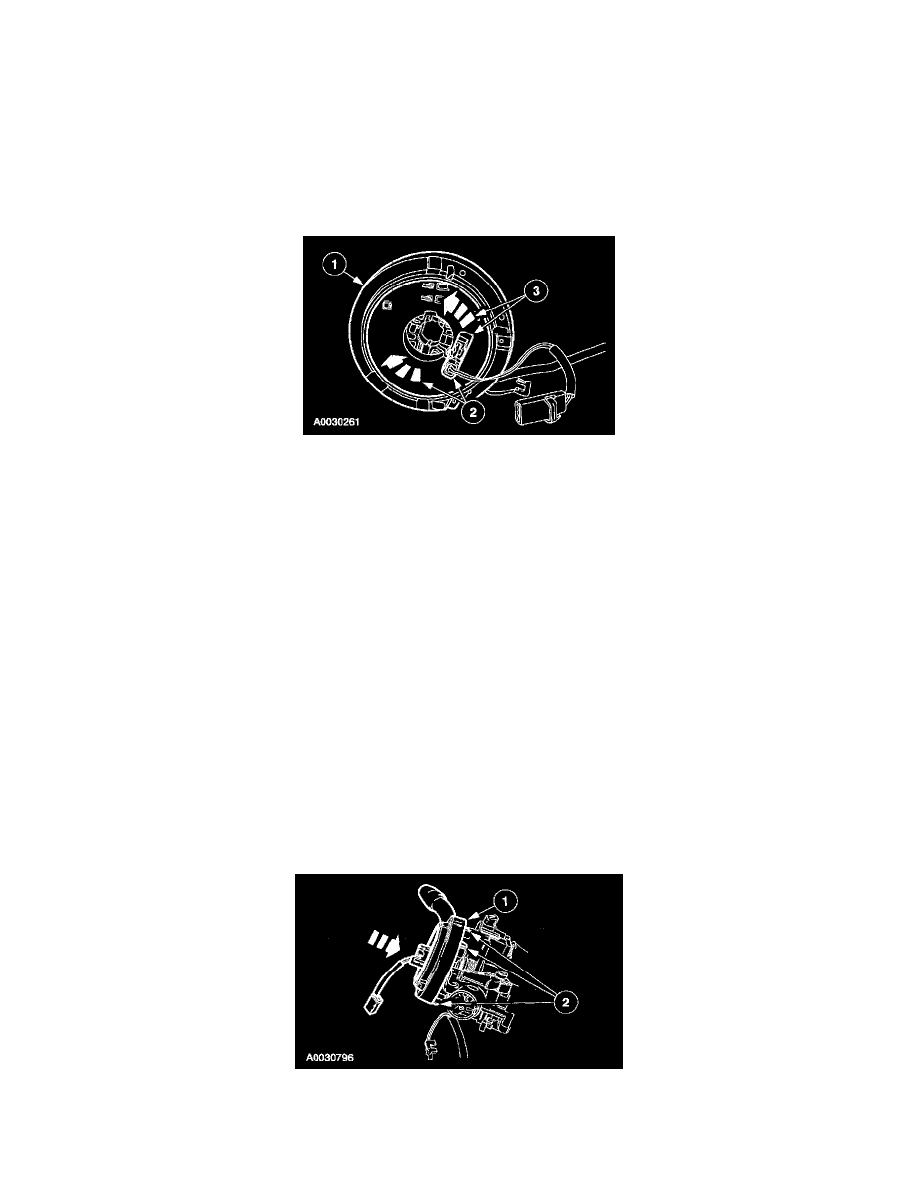F 550 2WD Super Duty V8-7.3L DSL Turbo VIN F (2002)

WARNING: TO REDUCE THE RISK OF SERIOUS PERSONAL INJURY, READ AND FOLLOW ALL WARNINGS, CAUTIONS AND
NOTES AT THE BEGINNING OF THE REMOVAL PROCEDURE.
Vehicles receiving a new clockspring
1. Remove the key from the clockspring, holding the rotor in its centralized position.
^
Do not allow the clockspring rotor to turn.
NOTE: A new clockspring is supplied in a centralized position and held there with a key.
Vehicles needing clockspring recentering
2. Centralize the clockspring.
1
Hold the clockspring outer housing stationary.
2
While turning the rotor clockwise, carefully feel for the ribbon wire to run out of length and a slight resistance is felt. Stop turning at this point.
CAUTION: Overturning will destroy the clockspring. The internal ribbon wire acts as the stop and can be broken from its internal
connection.
3
Turn the clockspring counterclockwise approximately 2.25 turns. This is the center point of the clockspring.
^
Do not allow the rotor to turn from this position.
WARNING: INCORRECT CENTRALIZATION MAY RESULT IN PREMATURE COMPONENT FAILURE. IF IN DOUBT WHEN
CENTRALIZING THE CLOCKSPRING, REPEAT THE CENTRALIZING PROCEDURE. FAILURE TO FOLLOW THIS
INSTRUCTION MAY RESULT IN PERSONAL INJURY.
CAUTION: Make sure the road wheels are in the straight ahead position.
NOTE: If a clockspring has rotated out of center, follow through with this step.
Vehicle repairs reusing the same clockspring
3. Remove the tape applied during clockspring removal.
NOTE: When the tape is removed, do not allow the clockspring to turn.
All vehicles
4. With the flats of the clockspring aligned to the flats of the steering column, slide the clockspring onto the steering column engaging the retaining
tabs.
